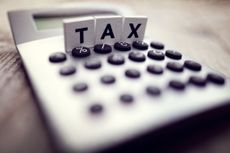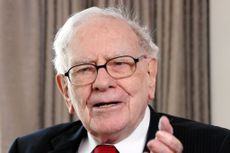The Case for Stocks Now
Despite the troubled economy, U.S. companies continue to post steady profits, and with the market down, their stocks could be great buys.

One of the key pillars for the bull market that began in March 2009 has been the surprising strength of corporate earnings. But as stocks tumble and talk of a new recession fills the air, investors have begun to worry that the foundation of the earnings story -- perhaps the final impediment to a bear market -- might soon start to crack.
And after the market’s terrifying August 8 plunge -- the Dow Jones industrial average fell 635 points, or 5.6% -- the bear is within growling distance. From the market’s April 29 high, Standard & Poor’s 500-stock index is down 18%, only 2 percentage points from official bear market territory. Investors are either disregarding the benign earnings picture or have begun to anticipate a recession that will lead to a slowdown in earnings growth or, worse, a drop in profits.
The ability of U.S. corporations to generate solid earnings gains in the face of a stagnant economy has been puzzling. Analysts on average expect companies in Standard & Poor’s 500-stock index to deliver operating earnings of about $99 per share in 2011. That’s well above the record $91.47 that was achieved in the 12 months that ended June 2007 and represents a 16% increase from the 2010 figure.

Sign up for Kiplinger’s Free E-Newsletters
Profit and prosper with the best of expert advice on investing, taxes, retirement, personal finance and more - straight to your e-mail.
Profit and prosper with the best of expert advice - straight to your e-mail.
Foreign Sales
The apparent disconnect makes sense once you understand the distinction between the S&P 500, which represents nearly 80% of the market value of listed U.S. stocks, and the U.S. economy. For starters, almost half of the profits of S&P 500 firms come from overseas, and the global economy -- particularly emerging markets -- has been strong. In addition, spending by businesses, rather than consumers, drives most of the revenues collected by S&P 500 companies. Although consumer spending accounts for more than 70% of America’s gross domestic product, only two of the ten S&P 500 sectors -- consumer staples and consumer discretionary goods -- depend primarily on individuals. And because a large share of the index is made up of energy and basic-materials firms, higher oil and commodity prices actually boost S&P earnings even though they act as a drag on U.S. GDP.
Bears argue that the current level of earnings is unsustainable. They point out that the ratio of corporate profits to revenues among nonfinancial firms in the S&P 500 reached a peak of 9% in 2011, compared with an average of 7% from 1995 to 2004. If the ratio reverts to its average, earnings would drop 20% to 25%.
But the factors that are driving up profit margins are likely to persist well into the future. Increasing sales to foreign countries is the major reason for the rise in margins because tax rates on profits are much lower overseas than in the U.S. Although the U.S corporate tax rate has remained constant over the past two decades, foreign tax rates have declined from nearly 50% on average in the early 1980s to just over 25% today. Overseas tax rates are unlikely to rise. And despite the current fiscal crisis, both Democrats and Republicans agree that the U.S. corporate tax rate, now the second-highest in the world, should be cut, a development that would further lift margins.
Another factor affecting the S&P 500’s average profit margin is that energy and technology firms make up a growing part of the index. Fast-growing tech companies in particular -- think Apple (AAPL) and Google (GOOG) -- have far fatter margins than more-established firms, such as IBM and Hewlett-Packard.
One factor that could shrink profit margins is a run-up in interest rates, which would raise borrowing costs for businesses. But rates would have to rise significantly to cut into margins. And there’s no prospect of the double-digit rates that devastated corporate profits in the 1970s and 1980s.
If earnings growth comes to a screeching halt or even if profits fall, the stock market still looks well-priced, especially relative to bonds. One of the best ways to measure the attractiveness of stocks is by looking at the S&P 500’s “earnings yield,” which is the inverse of the market’s price-earnings ratio and represents what your yield would be if all profits were distributed as dividends. Based on estimated earnings for 2011, the market’s P/E (as of August 5) was 12, meaning its earnings yield was 8.3%, well above its 6.7% historical average.
The earnings yield, meanwhile, is 5.7 percentage points greater than the yield on ten-year Treasury bonds (2.5%). And stocks are a much better hedge than bonds against inflation, which isn’t a serious problem now but is likely to pick up in the future. Earnings could fall 20% from current levels and stocks would still be favorably valued relative to bonds. Bottom line: The case for stocks remains extremely strong.
Columnist Jeremy J. Siegel is a professor at the University of Pennsylvania’s Wharton School and the author of Stocks for the Long Run and The Future for Investors.

-
 Starbucks BOGO and New Sweet and Spicy Drinks
Starbucks BOGO and New Sweet and Spicy DrinksFor a limited time, Starbucks is announcing four new "swicy" drinks that are both spicy and sweet.
By Kathryn Pomroy Published
-
 Stock Market Today: Dow Slips After Travelers' Earnings Miss
Stock Market Today: Dow Slips After Travelers' Earnings MissThe property and casualty insurer posted a bottom-line miss as catastrophe losses spiked.
By Karee Venema Published
-
 How To Invest Your Tax Return
How To Invest Your Tax ReturnWhen thinking about how to invest your tax return, prioritize your financial health over aggressive – and risky – ideas like bitcoin.
By Jeff Reeves Published
-
 Fiscal Year Definition: What Every Investor Should Know
Fiscal Year Definition: What Every Investor Should KnowA fiscal year has uses for financial reporting. Here's why it's an important concept for investors to be aware of.
By Will Ashworth Published
-
 Stock Market Today: Nasdaq Soars on Strength in Magnificent 7 Stocks
Stock Market Today: Nasdaq Soars on Strength in Magnificent 7 StocksThe main indexes started the week strong after several mega-cap stocks rallied.
By Karee Venema Published
-
 Where Can the Magnificent Seven Stocks Go in 2024?
Where Can the Magnificent Seven Stocks Go in 2024?The Magnificent Seven have been driving stock returns. Here, we take a close look at the mega-cap hotshots to see what's next.
By Nellie S. Huang Published
-
 How To Avoid Capital Gains Taxes
How To Avoid Capital Gains TaxesA few small changes in your investing strategy can result in big tax advantages.
By Jeff Reeves Last updated
-
 Warren Buffett Stocks: Analyzing The Berkshire Hathaway Portfolio
Warren Buffett Stocks: Analyzing The Berkshire Hathaway PortfolioThe Berkshire Hathaway portfolio is a diverse set of blue chips and some lesser-known growth bets. Here, we look at all stocks picked by Buffett and his lieutenants.
By Dan Burrows Published
-
 Stock Market Today: Stocks Struggle To Gain Traction Around Record Highs
Stock Market Today: Stocks Struggle To Gain Traction Around Record HighsMarkets took a breather ahead of a busy week with big implications for rate cuts.
By Dan Burrows Published
-
 Kiplinger's Mutual Fund Guide For 2024
Kiplinger's Mutual Fund Guide For 2024Giant U.S. tech stocks dominate many of the top-performing names in Kiplinger's mutual fund guide, but small and foreign companies are well represented too.
By Nellie S. Huang Published